
The main task I am involved with here on MOSAiC is the drilling of sea ice cores. Each week, a group of 10 scientists from the Sea Ice, Ecology, and Biogeochemistry teams goes out to two different “Dark Site” locations on the floe to drill ice cores that will be used in a variety of different experiments back on the ship. We call this large weekly effort “Coring Monday.” Here’s a sense of what this day looks like:
Sunday
Night: Coring Mondays always start the night before with the preparations and packing of the gear. We need lots of equipment: drills (with many, many extra batteries), saws, shovels, core barrels, and storage containers, just to name a few. I am responsible for preparing the data sheets for the next day and working with the team leaders to decide which – and how many – ice cores we will plan to drill. Most coring days we aim for between 30 and 40 cores total from the two sites.
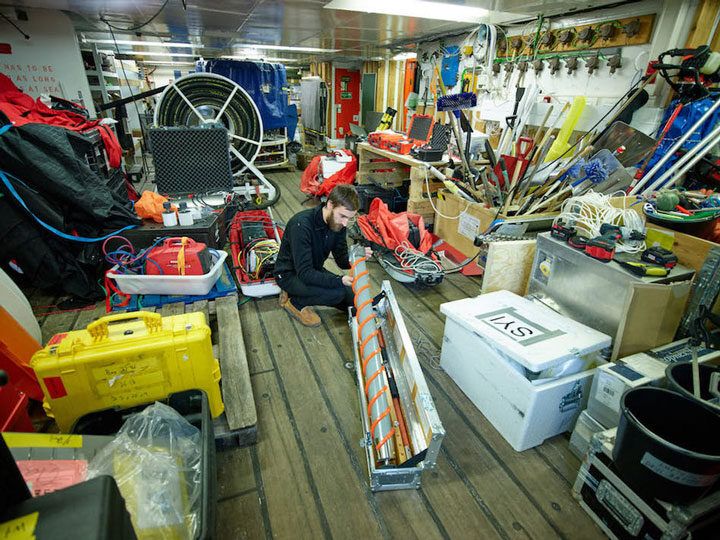
Monday
07:30: Breakfast time. The whole team generally eats right away in the morning, and makes sure to have enough for the long day in the field. We also pack some food to eat for lunch out on the ice.
08:00: After a quick breakfast, the team meets to load all the coring gear onto the ice floe. Our whole operation requires 4 snowmobiles, each one pulling two 10-foot-long sleds filled with coring equipment. By 9:00, our teams are packed and ready to go. We are joined by two polar bear guards from the logistic team, and set off for the Dark Site. My team heads to the First Year Ice site (FYI) while the other group goes to core at the Second Year Ice (SYI) site. If you’re lucky, you can get a seat on the snowmobile. Otherwise, it’s a long bumpy ride sitting on the wooden sled.
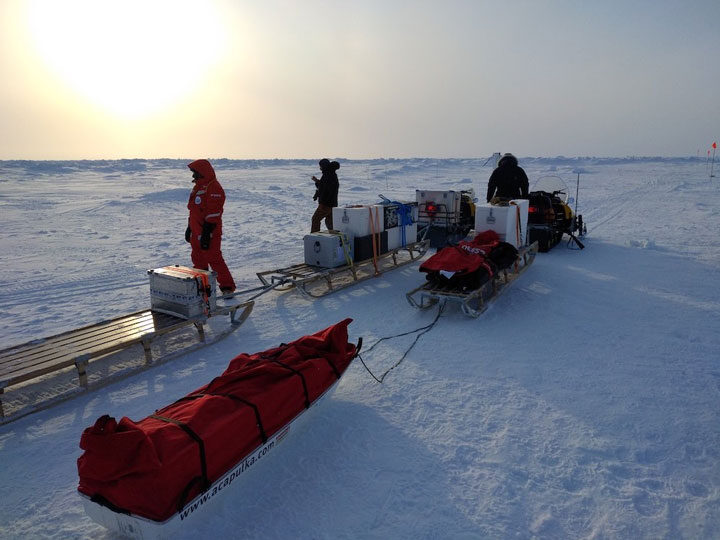
09:30: After arriving to the site, our work immediately begins. I start with a snow pit analysis, measuring the depth, temperature, and density of the snow pack. The rest of the team prepares the gear and sets up the 2 working tents and 1 “warming-up” tent.

9:45: The ice coring begins. Two people work on drilling the cores, two people examine the drilled cores, note down features, and slice some for later processing; one person works between both groups, transferring the cores and facilitating communication. About half of the cores that are drilled get sliced up in the field into 5- or 10-centimeter sections, while others stay as full cores and get put into 1-meter-long bags.
The cores are drilled with a hollow barrel that has blades on the bottom and threads around the outside. As the blades cut into the ice, the barrel drills down, filling up the hollow space with a long cylinder of ice. The ice core can then be removed for slicing or packaging.
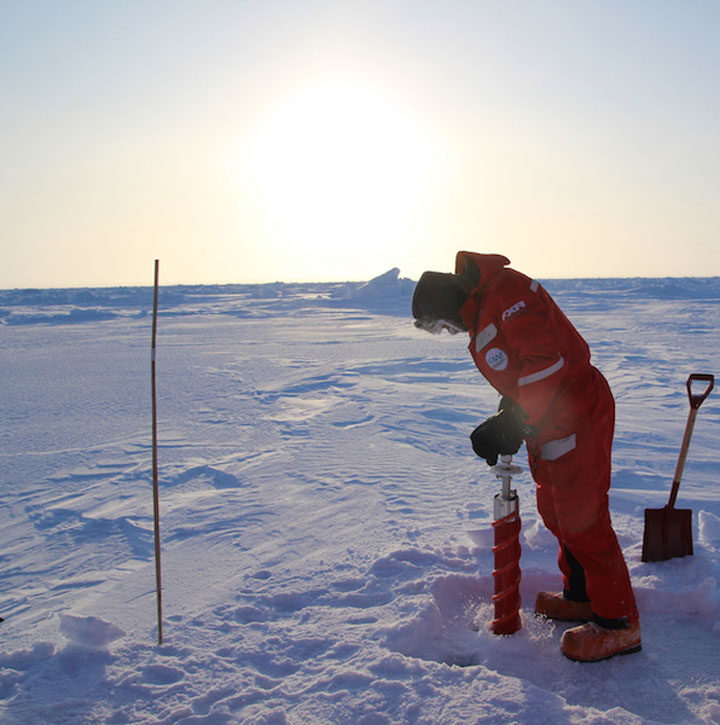
13:00: After a few hours of coring, it’s time for a lunch break. Sandwiches and hot chocolate/tea help keep the energy up!
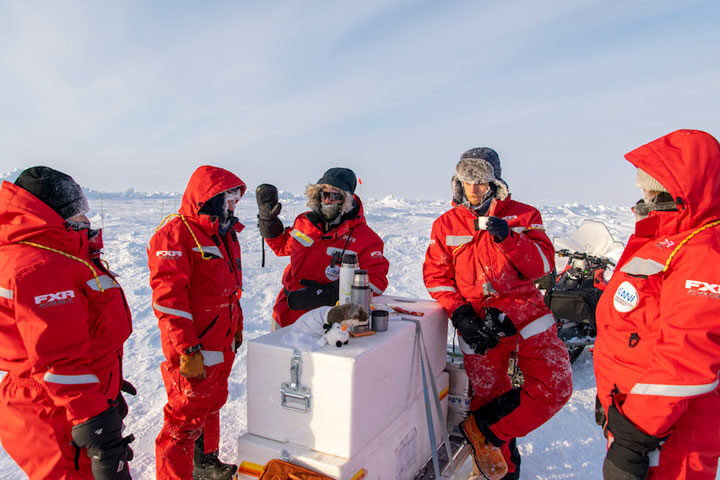
13:30: The coring continues. At the FYI site, the ice is typically around 1.7 to 1.8 meters thick at this time of year. This is ice that has grown since the end of last summer. The SYI site, on the other hand, is ice that started growing after two summers ago (hence the name) and did not completely melt at the end of last summer. The SYI, therefore, is generally around 2.2 to 2.6 meters thick. Most of the ecology and biogeochemistry teams’ work is focused on FYI, so more cores are drilled there. The sea ice team is interested in the physical properties of the ice (salinity, temperature, density) and therefore takes an equal number of samples from both sites.
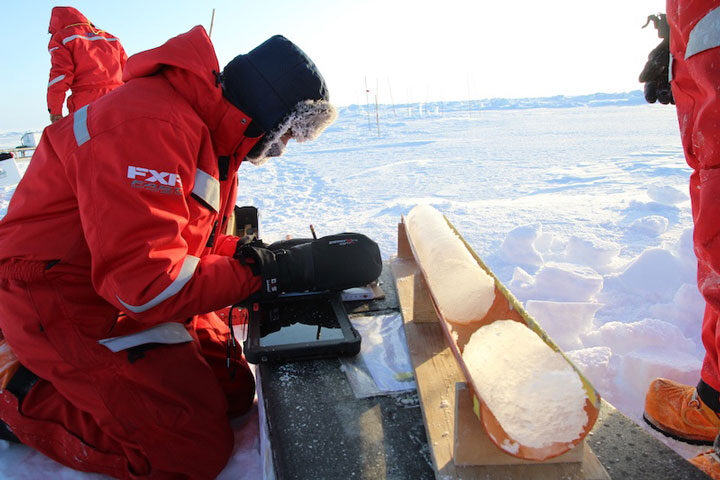
17:00: After roughly seven hours working in the field, we finally reach the end of our list. We start the clean-up by packing up the sleds and all of our gear, which is more or less the same procedure as the morning. The largest change, however, is that we’ve typically added around 40 meters worth of ice cores, which can weigh a few hundred pounds.
17:30: We arrive back to the ship to unpack all of the gear and distribute the ice cores to the various teams.
18:00: What we’re most looking forward to by now: dinner!
19:00: After dinner, the work continues. We need to clean all of the gear that was used during the day, so that it will be suitable to work next week. This means rinsing off the salty seawater from all of the equipment.
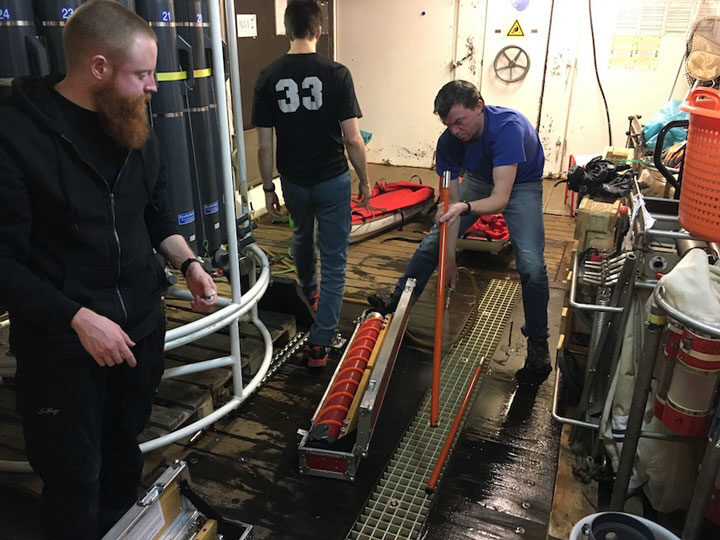
20:00: Processing begins. Some cores need to be processed the same day, so many of us head to our labs to work on the samples that we drilled. I run some core sections through a centrifuge to remove and analyze the brine, and measure the ice density on other sections.
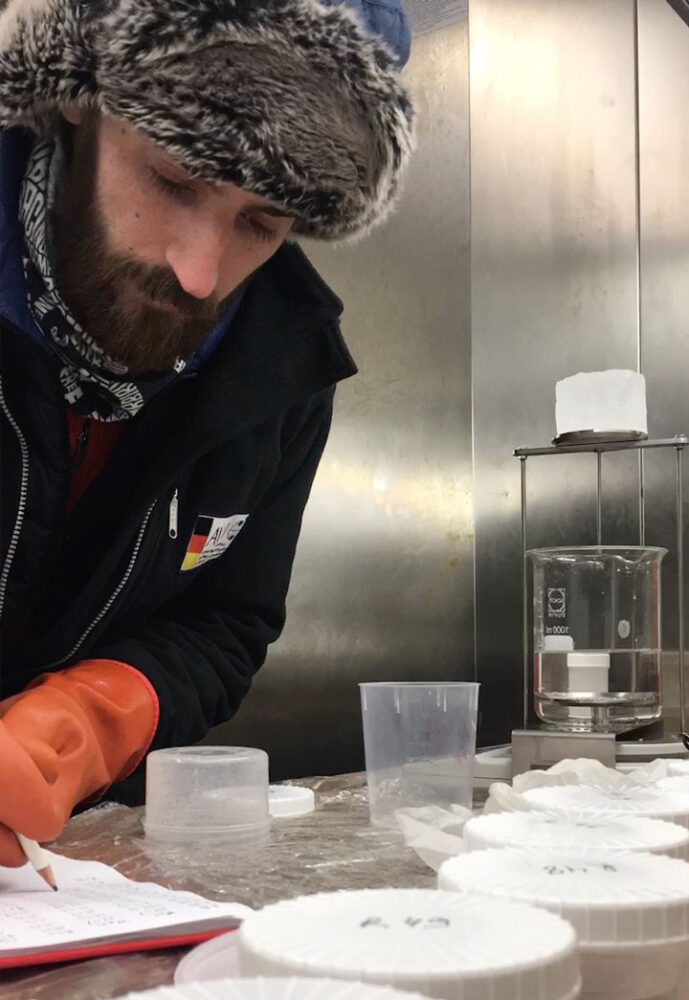
22:00: After a long day of work, it’s finally time for bed.
The next few days will be filled with more processing of the ice core samples and entering data. Before long, it’s Sunday night and we get to start the process over again.




Now that’s what I call a proper blog! Excellent. Thank you.